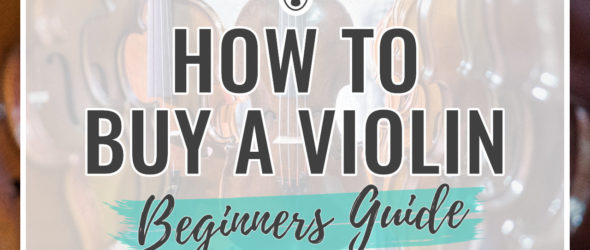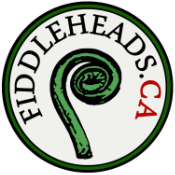Check out how to buy a violin with this easy guide!
So you want to start playing the violin? Well, first you have to buy one! In this guide, I’d like to share with you the best tips for buying a violin as well as recommended places to purchase one.
If this is your first instrument, you probably don’t know yet which aspects you should pay attention to. There are a few things to keep in mind, to ensure you get a violin that is playable and will last for a couple of years at least. The checklist below will help you make an informed decision. If you’re a more advanced student, you might want to refresh your memories about what you should be looking for and learn a good place or two to purchase a violin.
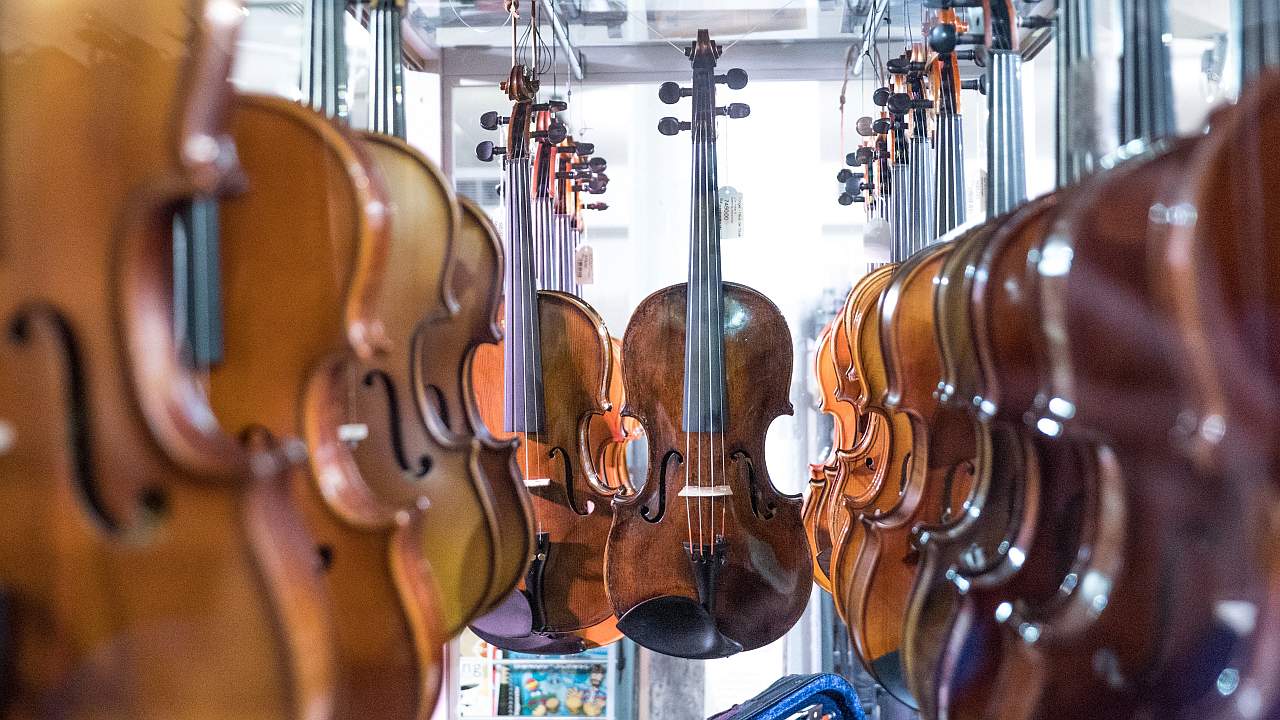
8 Essential Tips for Buying a Beginner Violin
Buying your first violin is important. It will be your first instrument and you will learn the basics on it, so it has to be helpful with a good sound.
Here are the most important points to determine if a violin will be playable and helpful to you in your learning journey:
1. The pegs should turn easily
If they are stuck, or if they are too loose, tuning will be very difficult.
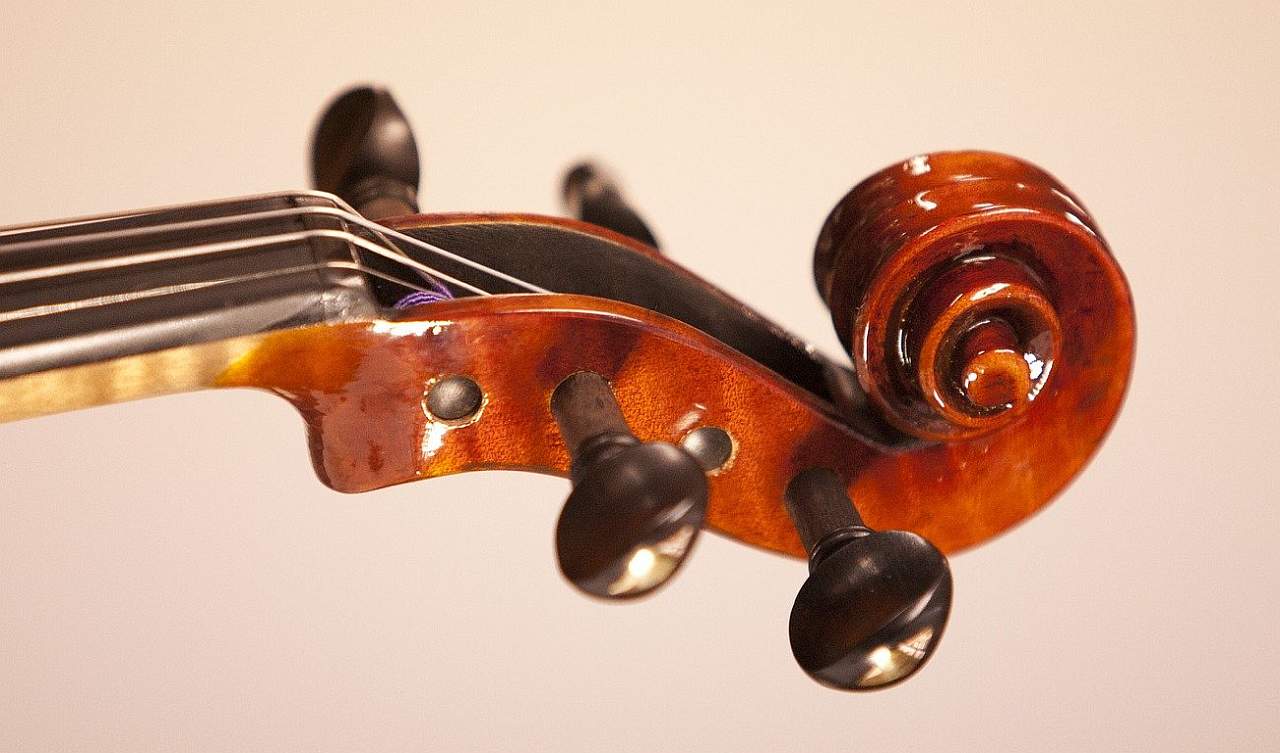
2. The fine tuners are turning without resistance
As with the pegs, if there’s significant resistance in the fine tuners, the tuning will be difficult. It might be fixable, so if you notice such a problem, make sure to ask the seller about it before the purchase.

3. No plastic parts
Sometimes the chinrest or tailpiece might be plastic. Avoid these because they are not durable enough.
An exception here might be hypoallergenic clamps for holding a chinrest. Usually, this is something you would not buy with your first violin but after some time of using the standard metal clamps and only if needed.
4. Check the wood and its certificates
First of all, an instrument made of hardwood can produce a better sound that cannot be achieved with plywood or other materials.
Secondly, look for information about a wood certificate or ask the seller about it. It can be FSC or PEFC.
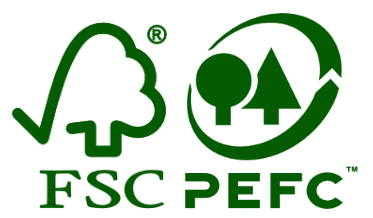
Last, but not least, check the finish on the wood. If it’s varnish, you can go ahead and check the other points on the list. If it’s white, black, blue, or has any other layer of paint on it, the sound will suffer, so I recommend you find another instrument. Of course, you will find nice painting on various electric violins. In such cases, it doesn’t mean they are of lesser quality. If you’re on the fence about whether to buy an acoustic or electric violin, take my advice: I don’t recommend buying an electric violin as your first instrument.
5. Real purfling
The purfling – the black stripe on the outer side of the violin’s body – must be made of wood instead of being painted.
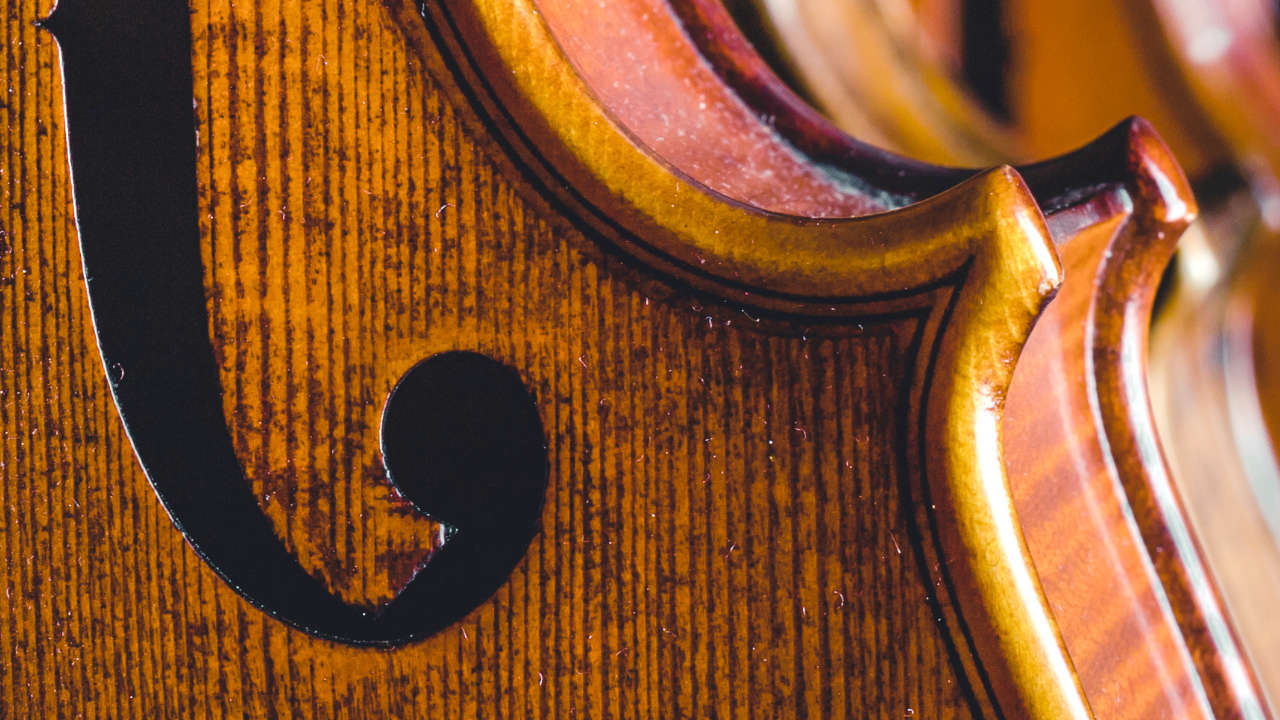
6. Correct strings and bridge set-up
Check out the strings:
- Try to play a few notes on each string. Are the strings too high?
- Can you go from one string to the next without trouble?
- Do they have even spacing?
If you answer no to any of these, there’s a problem with the bridge: either it is not curved correctly or it needs a bit of trimming so the strings are not too high. This is also fixable, so it’s not as important as the other issues, but it is better to get a violin in the best condition possible, rather than trying to fix its problems before you play your first note.
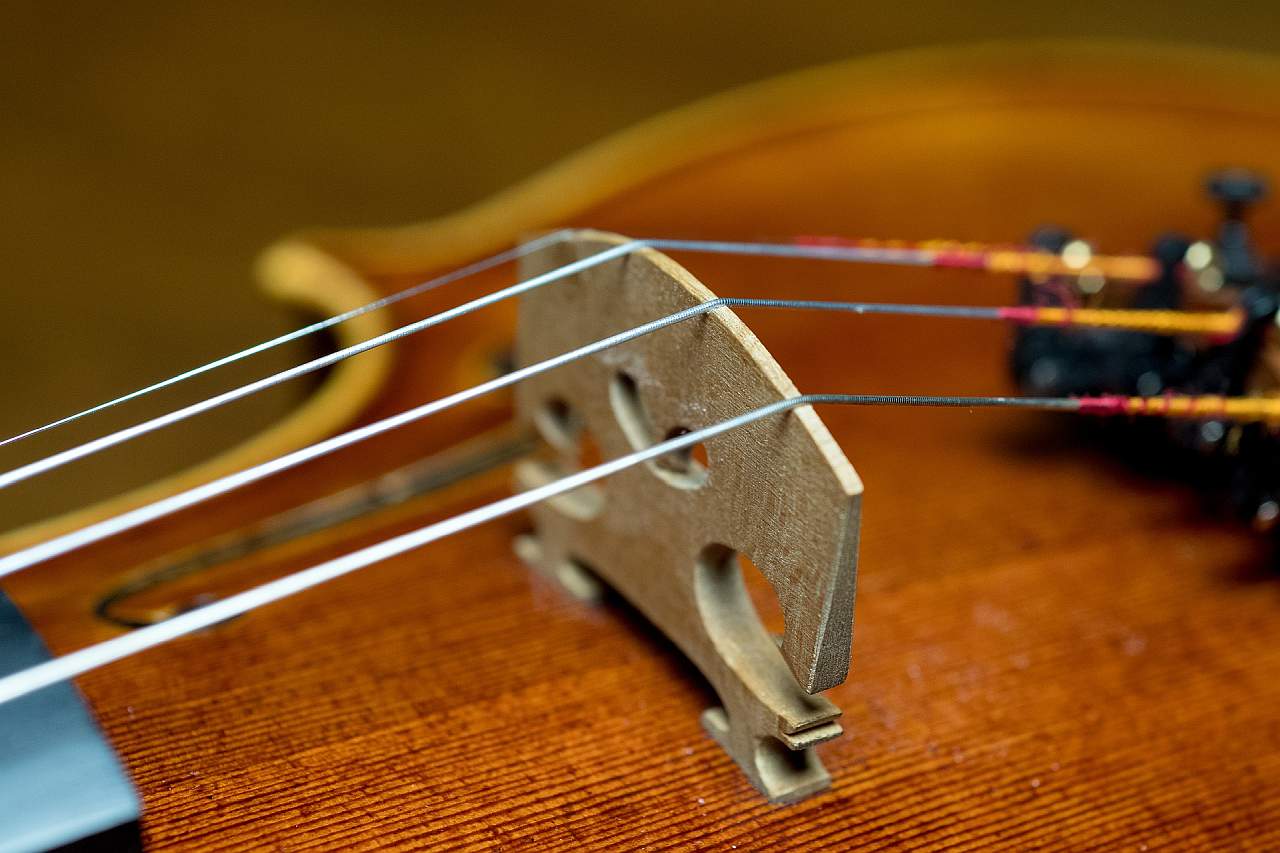
7. Pay attention to the details
The carving on the scroll and other parts of the violin should be as detailed as possible. This shows good craftsmanship. The violin should also have symmetry.
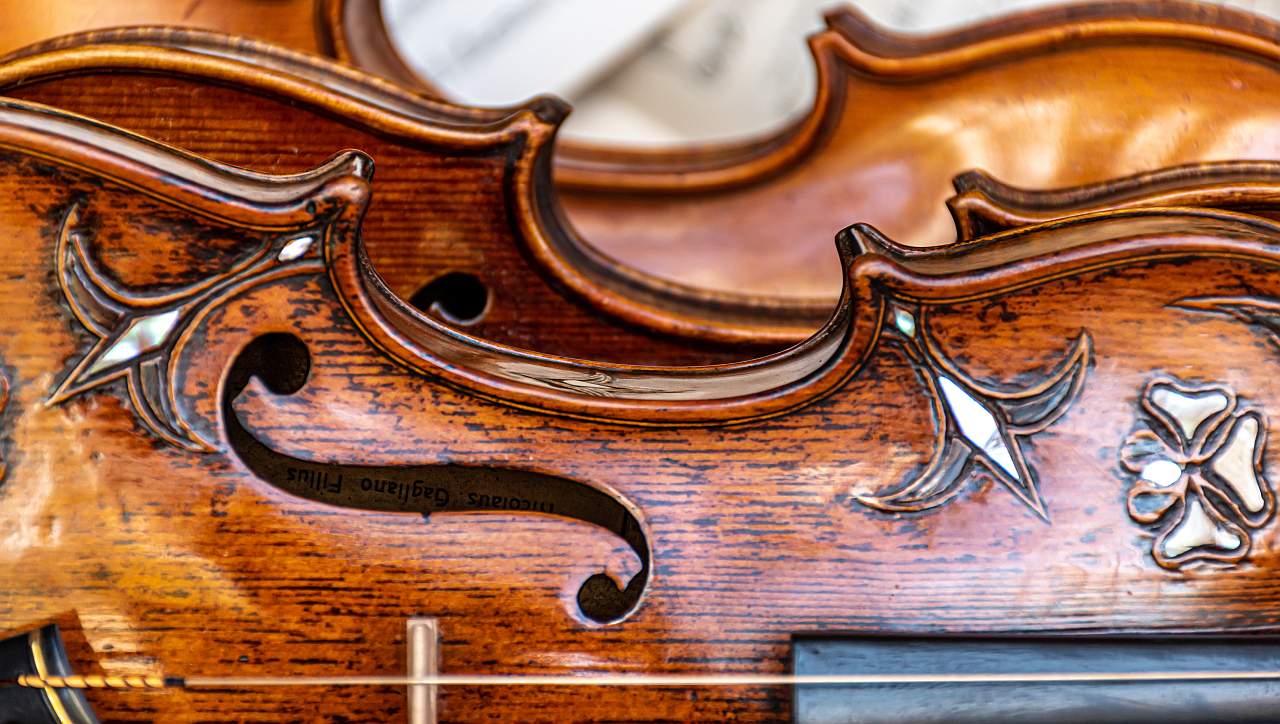
8. Do you like the look and the sound of the violin?
Most importantly, check if you like the look of the violin and its sound. It will be your first instrument so it’s important to get one you like playing!
Here you can download the Violin Buying Checklist, which includes the essential tips plus a few more insights from me:
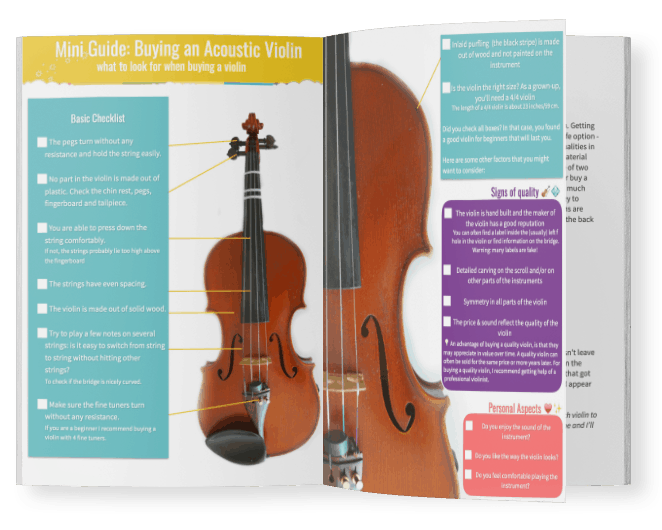
Get Your Free
Violin Buying Checklist [PDF]
Determine the Right Violin Size for You
Getting a good quality instrument is one thing. The other is the size of the violin that you need.
Depending on your age and growth, you might need a different-sized violin. Usually, violins come in four sizes: 1/4, 1/2, 3/4, and 4/4, though there are also other sizes like 7/8 or 1/8 and smaller. As a general rule of thumb, if you’re an adult or teenager, you need a full violin (4/4). However, you can check if the size is suitable with this simple test:
Put the violin on your shoulder (much as you would when you’re in a playing position) and extend your left arm. If your fingers can’t cover the scroll of the violin, you need a smaller one. You or your parent/guardian should consider your growth rate and age because, for example, if you’re growing very fast and your fingers can’t cover the scroll at the moment but are very close to doing so, maybe it’s best to not get a smaller size because you will end up needing to change it in a couple of months.
To learn more about violin sizes and how to choose the right one for you, read my article “What Size Violin Do You Need?“
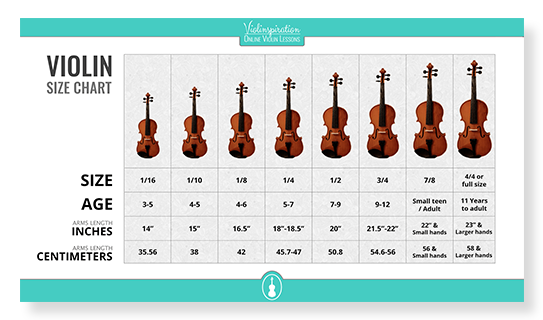
Get Your Free
Violin Size Chart [PDF]
A Violin for Your Budget
What is your budget? Do you want to buy the cheapest violin and just try for it some time to find out if it’s really for you? Or maybe you’d like to spend some more to buy a quality violin that will stay with you for longer? It’s important to answer such questions and set a budget for your purchase. Here are my tips for planning your budget to buy a violin:
1. “You get what you pay for”
It might not be an absolute rule but there’s some truth to this, especially when there’s a huge price difference. Don’t expect a $50 violin to be as good as a $300 violin.
Your first violin doesn’t have to be very expensive but you can expect to get a better instrument when the price is a bit higher.
2. Minimum price: $100
Don’t buy a violin that costs less than $100. A cheaper violin might be a nice-looking instrument but for sure it will be a mass-produced item that won’t give a decent sound.
3. Target price: about $500
Look for an instrument for around $500. At this price tag, you will get a good instrument to start with. When you’re still inexperienced, you won’t hear the difference between this level and better, more expensive instruments, so going a lot higher won’t really help you in the beginning.
Ultimately, if you buy a better instrument at the outset, you also won’t need to replace it as quickly or you can resell it at a higher price. Especially when buying second-hand, violins retain their value, so they can even be bought as an investment.
Don’t Be Afraid to Ask for Advice
It’s always worth asking a teacher or a professional for advice.
If you want to buy the instrument in a music shop, take your teacher with you if that’s possible. Even if it costs you something to pay for his or her time, the advice you’ll get is worth more. Your teacher can save you from buying a violin that’s difficult to play or one that is of very low quality.
Also, a violin shop employee can help, even though you have to keep in mind that they are trying to sell you things. A nice benefit is when the employee can play something for you on the instruments that you’re considering buying. That way, you’ll get a better idea of the sound quality.
Your teacher or any other violin professional or at the very least someone with experience in buying instruments should be able to give you valuable advice or even better, be there to shop with you and guide you.
If you don’t happen to have anyone to help you, read online articles related to the topic to get a better perspective. That is the exact purpose of this article!
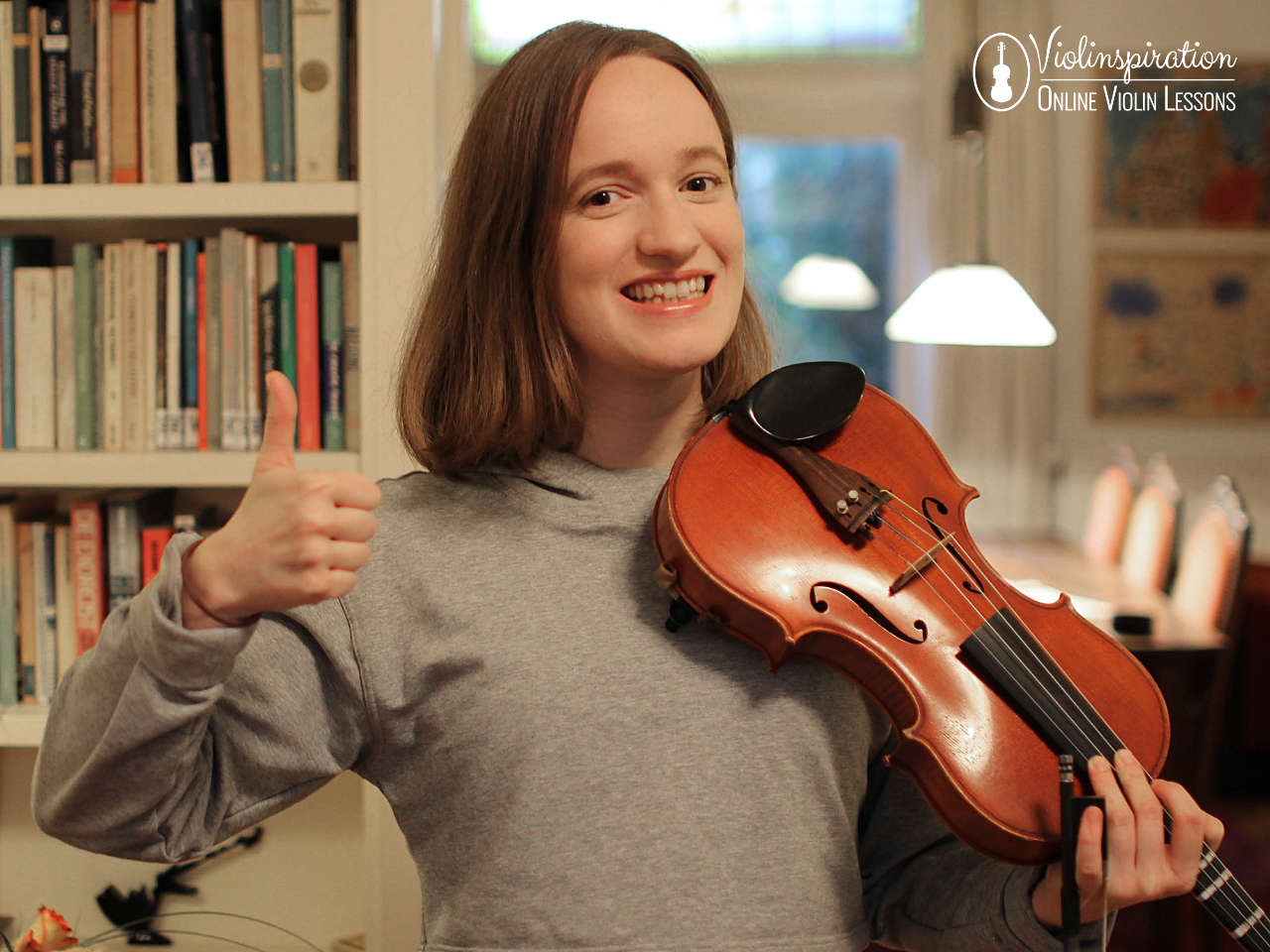
Renting a Violin vs. Buying a Violin
Renting a violin is another option you have instead of buying right away – some retailers or even violin teachers offer this option. While there are more pros than cons, the disadvantages are somewhat important. Let’s have a look at both.
Advantages of renting a violin:
1. Small expenditure at the beginning
You’re not spending much right away. Moreover, a “rent to own” program might be what you’re looking for if you’re not willing to spend much or you have a small budget.
2. You can just try and see how playing a violin feels
You might not be sure about your choice (or your child about their choice) to start playing the violin and you want to test the waters. Instead of purchasing outright, this might be a good alternative to see if you do like playing the violin.
3. No need to search for the right instrument
Usually, the instruments that are for rent, while not the best on the market, are at the very least acceptable, so you don’t have the headache of choosing the right instrument.
4. No need to buy a new instrument when a child is growing
Renting a violin is a perfect option when your child needs a violin size of 1/2 or smaller. Children grow quickly and their body is constantly changing, so buying an instrument each time a different size is needed might be very expensive.
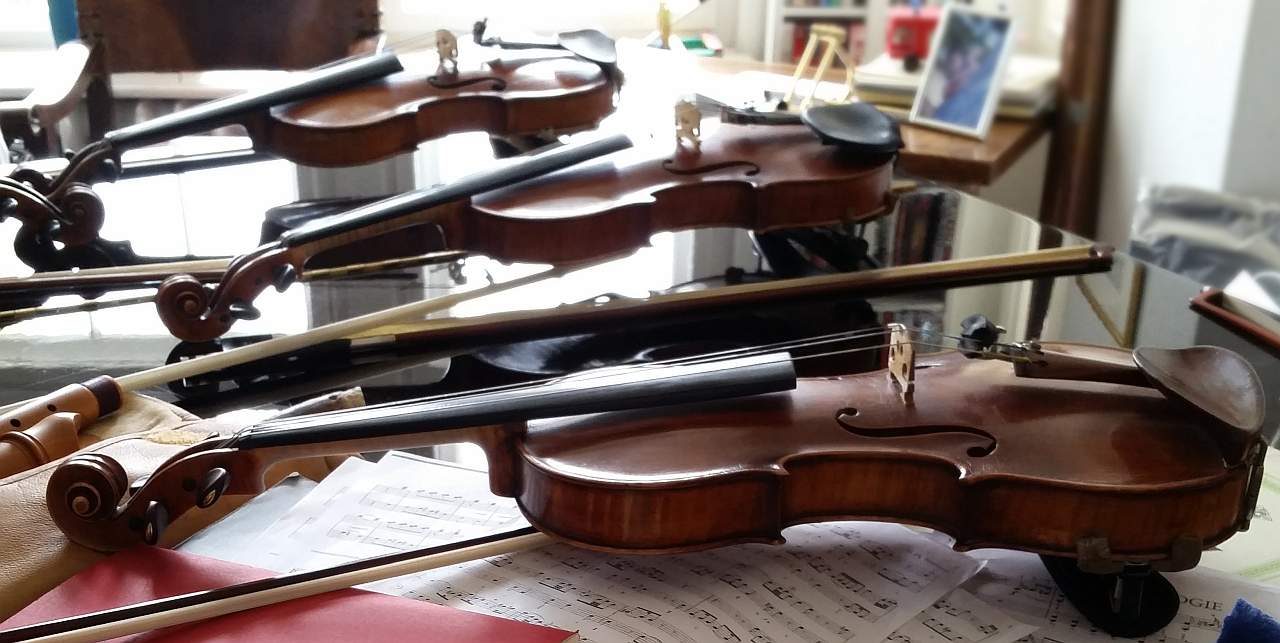
Disadvantages of renting a violin:
1. Unknown condition of the instrument
Instruments for rent are usually not in the best condition. Even if they look good, you have no idea how the previous player treated them or the damage they might have accrued.
2. You can’t keep the instrument (unless it’s “rent to buy”)
As you spend more and more time with an instrument, you’ll get an emotional attachment to it. This is a good thing that can boost your morale… on the other hand, it will make it hard to give it back one day.
3. The expenditures accumulate
If you rent a violin for a very long time, you may eventually find that you have paid the price of a quality violin, without actually owning one.
Where to Buy a Violin
In my opinion, the best option is a violin shop or a music store where you can build trust. The benefits of having a trustworthy seller will be clear when you want to try new strings, purchase a new bow, and buy a higher-quality violin in the future. At the same time, I am aware that you may not live close to a musical shop or a luthier who sells violins. In this case, you’re probably going to buy an instrument online – I’ve got some tips for that as well.
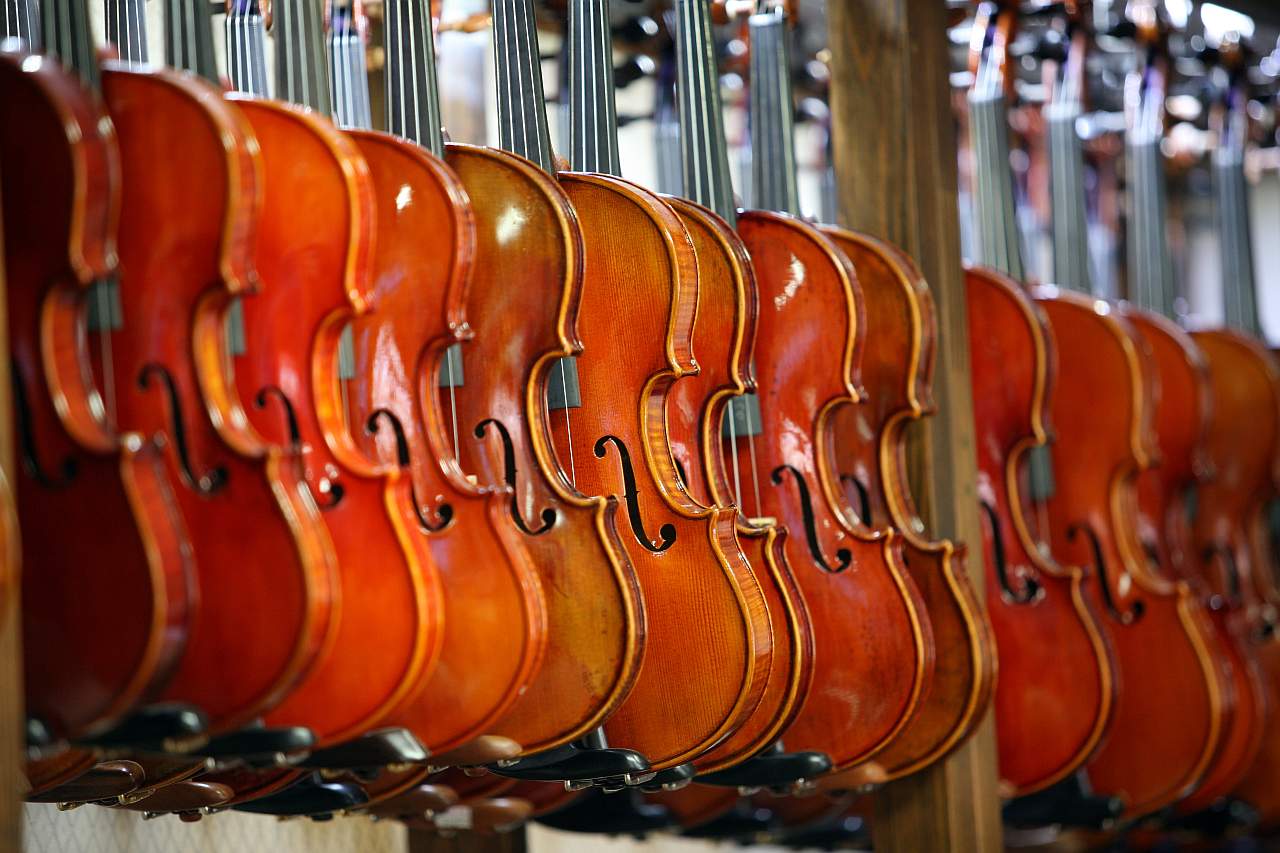
Where to buy a violin in person
If you have a chance to buy a violin in person, here are the options for you:
1. Go to a music shop/luthier’s shop
This way you get the advantage of looking at the violin and playing it before you buy it, which is always preferable to buying blind. Moreover, you can compare different instruments within your budget and get advice from the staff or the luthier themselves. Also, you may go to such a place with your teacher and get his/her opinion before the purchase.
Another good thing about buying in a shop, especially run by a luthier, is that you might be offered quality second-hand or antique violins.
The quality of a violin within a certain price range differs significantly between countries and continents. In Europe, especially Eastern, you can find quality handmade instruments for less than 1000 Euro. In general, you can find many violin shops across Europe in which you can buy an antique instrument for a reasonable price.
If you dream of an exquisite violin, maybe you could consider visiting a European country for your vacation? I can recommend looking for a beautiful-sounding violin in Poland, the Czech Republic, or Romania. Of course, you can also choose the place where it all started – Cremona, Italy.
2. Online second-hand websites
Yet another option is to find a second-hand violin via an online exchange platform. When you find an interesting offer, the best approach is to meet with the seller and check out the instrument in person before purchasing.
Here are some platforms that you can give a try:
- Craigslist
- eBay
- OLX
- Marktplaats (Netherlands)
- eBay Kleinanzeigen (Germany)
- Allegro (Poland)
I bought 7 violins second hand, including the violin I currently play on, and I really prefer this option.
3. Put a notice up in a music school
A second-hand violin from a music student is also a good option. You will get a quality instrument for a much lower price than a new one. Bonus: probably the seller will add a bow, a violin case, maybe also rosin.
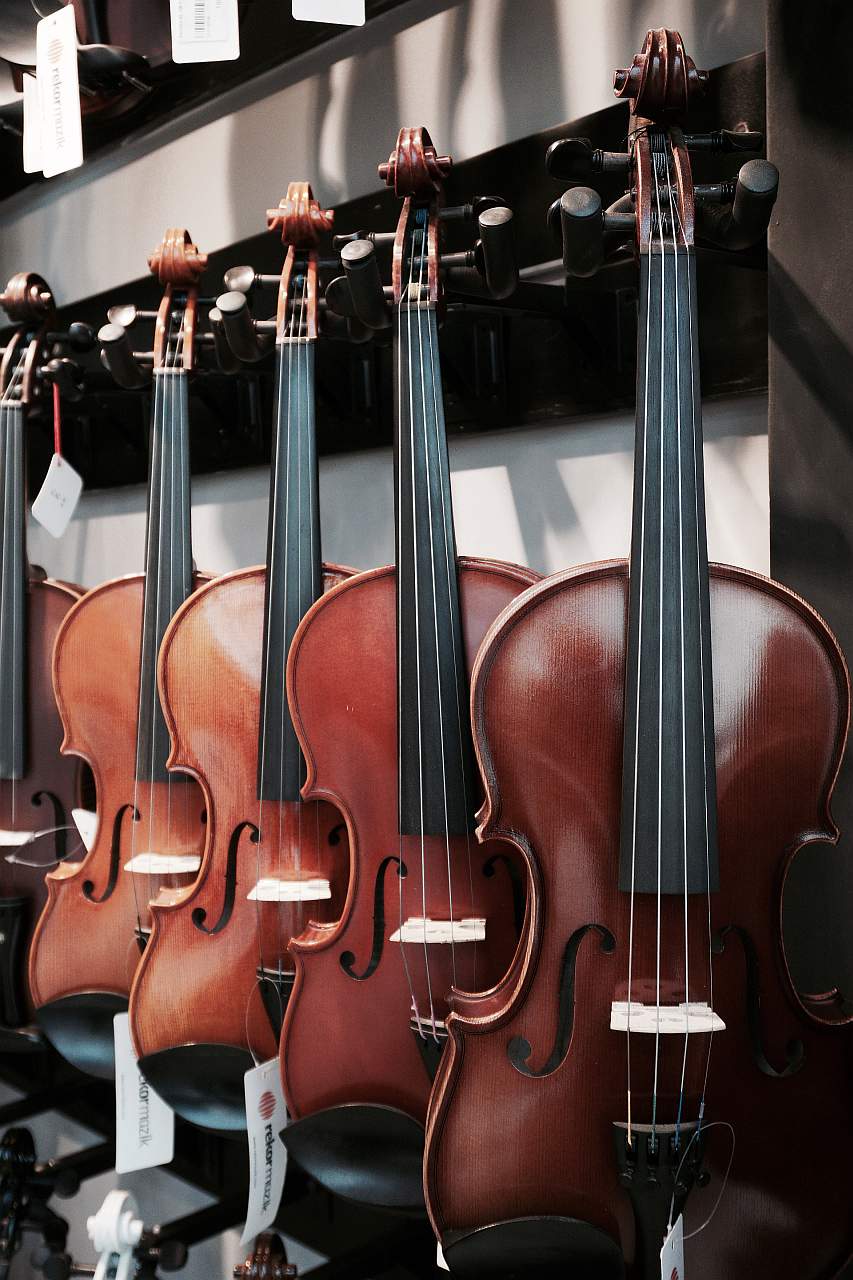
Where to buy a violin online
Online platforms are also a way of finding a quality violin. You may get the highest quality for the cheapest price. There are several trustworthy Internet stores where you can shop and be 100% satisfied. Here are some of them:
1. Corilon
This is an online shop ideal if you plan to spend $1000 or more. They sell very nice, quality violins, including antiques. I have bought two violins there, and I’m very happy with the quality.
2. Thomann
Every musician knows Thomann! At least in Europe. The store has great variety, ships worldwide, and provides amazing customer service. Comparing products can be your best friend.
3. Fiddlershop
Fiddlershop is a US-based company specializing in string instruments and accessories. The shop has unmatched variety and can be very helpful to choose what’s best for you, as it has separate categories for players of different levels, as well as video reviews of their products.
4. Amazon
While it might not be the first choice for music instruments, Amazon is a reliable shop for pretty much everything so you might want to check there. If you’re using this option, make sure to check whether the product you want to buy has the FSC or PEFC certificate.
5. Fiddleheads
This Canadian shop is totally eco-friendly! They source the materials only from renewable sources, so you don’t have to figure out yourself where the wood is from.
6. Buy from the manufacturer online
Shopping directly from the manufacturer, if possible, is always reliable. Not all brands have an online store but at the very least, they will have a list with their partners so you’ll be able to find one near you.
You can always try buying from smaller businesses such as Gliga Violins (available at violinslover.com and violinslover.ca). However, this is not recommended for a beginner student, because there are several of them around and you should first be able to distinguish the ones that seem better for your needs.
FAQ
How do I pick the right violin?
You can pick the right violin for you by checking the following: there should be no plastic parts, the pegs and fine tuners should turn easily enough, the violin (including purfling) should be made of solid wood. Finally, check the strings to see if you can move from one to another easily, and check whether they are not too high from the fingerboard. They should have even spacing.
After that, check the size of the violin, and see if you like the sound – its color and tone.
How much should you spend on a beginner violin?
You should spend at least $100/€100 on a beginner violin. Anything less usually is too cheap, and will not be playable or comfortable at all. Below that price, the materials are of low quality or plastic. The target price for the first violin should be around $500.
If this is your first violin, you don’t have to go and buy the most expensive one.
How do you pick a violin size?
You can pick the violin size by checking your arm’s length. Extend your left arm while holding the violin on your shoulder like you would in a playing position. Your fingers should cover the violin scroll. If they don’t, you need a smaller instrument.
Generally speaking, if you’re an adult, and maybe if you’re a teenager or you’re growing fast, you should pick a 4/4 (full size) violin.

Get Your Free
Violin Size Chart [PDF]
Should I rent a violin?
Renting a violin for you, or your child, is a good option if there’s uncertainty about the interest in playing the violin. If you can’t spend much, this can be very helpful too. Some stores have a “rent to buy” option which in these situations might be ideal.
However, it’s always preferable to have your own instrument and you won’t get the same quality from a rented instrument, compared to a brand new one.
To Sum Up
Buying a violin, especially your first one, is a unique experience. I hope that you find my tips helpful in the process.
Don’t forget to download the Violin Buying Checklist [PDF] to remember all the things you should check when you go to a music shop.

Get Your Free
Violin Buying Checklist [PDF]
Always remember, your instrument is your best friend through your music journey. So find the best option that is affordable and suitable for you, and start exploring!
